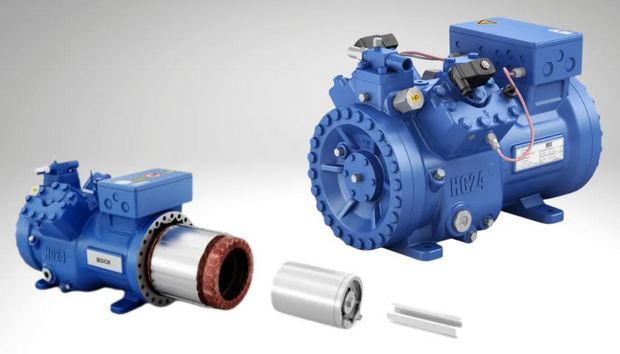BOCK launches magnetic motor series and output controller for CO2 compressors

German compressor manufacturer BOCK is expanding its transcritical CO2 (R744) compressor portfolio with two efficiency-improving technologies: a new Line Start Permanent Magnet (LSPM) motor technology series, and the DCR22 CO2 compressor output controller.
“The LSPM compressors for use in refrigeration and heat pump systems combine the strengths of robust asynchronous motors with squirrel cage rotors and those of synchronous permanent magnet motors,” according to a statement (in German) by BOCK on its website.
The LSPM enables a compressor to achieve “a higher refrigerant mass flow with an optimized speed and thus more cooling or heating capacity,” said BOCK. “Since there are no power losses in the rotor, the motor and overall efficiency of the compressor are increased – by an average of around 6% compared to a standard asynchronous motor.”
BOCK offers the new LSPM motors in three compressor sizes with a total of 16 displacement levels from 4.8 to 39.5m3/h (170 to 1,395ft3/h).
Adjusting to current output requirements
With the DCR22 CO2 compressor output controller, the output of transcritical BOCK CO2 compressors can be adjusted almost steplessly to the current output requirements of the system, said BOCK.
Depending on the operating conditions, the system covers a bandwidth between 25 and 100% power (four cylinders). “This ensures great economic and technical advantages, especially in areas of application with strongly fluctuating power requirements, such as in many industrial processes or supermarket applications,” said BOCK.
According to BOCK, additional advantages include:
- Higher average evaporating temperature
- Minimized compressor start-stops with reduced risk of wear, and longer engine life
- Possible use of existing compound controllers: integration into existing system control (with available digital power control for reciprocating compressors)
- Increased system efficiency, reduced investment and operating costs
- Universally applicable to digital and conventional power control
- Alternative to frequency converters
